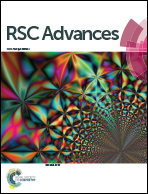Removal of dyes by a novel fly ash–chitosan–graphene oxide composite adsorbent
Abstract
A novel graphene oxide-based adsorbent (FCGO) is synthesized from fly ash cross-linked with chitosan and graphene oxide and characterized through scanning electron microscopy, X-ray diffraction and Fourier transform infrared analyses. The adsorbent effectively removes anionic and cationic dyes, namely, acid red GR (ARG) and cationic red X-5GN (CRX), respectively. The removal ratio of ARG by FCGO decreases with increasing initial pH in acidic solutions but is not affected at pH higher than 6. By contrast, initial pH minimally influences the removal ratio of CRX. After the adsorption of ARG and CRX by FCGO, the final pH becomes close to neutral in acidic medium because of the protonation effect. The adsorption kinetics of ARG and CRX follow the pseudo-second-order kinetic model. Adsorption is mainly controlled by boundary diffusion and internal diffusion for ARG but only by boundary diffusion for CRX, and the process satisfactorily fits with the Redlich–Peterson model. The maximum adsorption capacities are 38.87 and 64.50 mg g−1 for ARG and CRX, respectively. Negative ΔG0 values (ARG: −2.909 kJ mol−1 to −4.592 kJ mol−1, CRX: −2.526 kJ mol−1 to −4.738 kJ mol−1) and positive ΔH0 values (ARG: 22.299 kJ mol−1 and CRX: 15.669 kJ mol−1) indicate that adsorption is a spontaneous and endothermic process.


 Please wait while we load your content...
Please wait while we load your content...